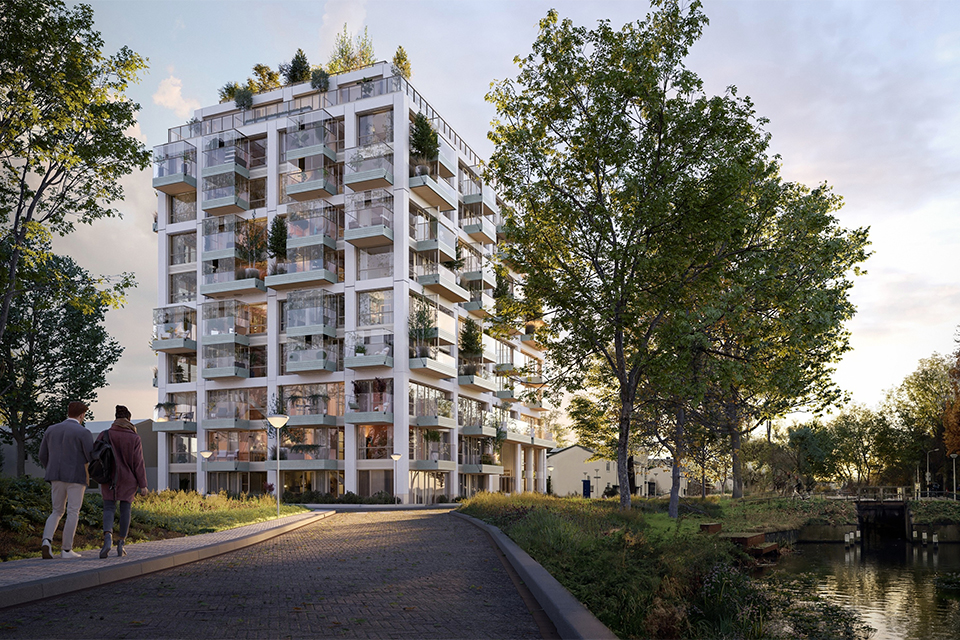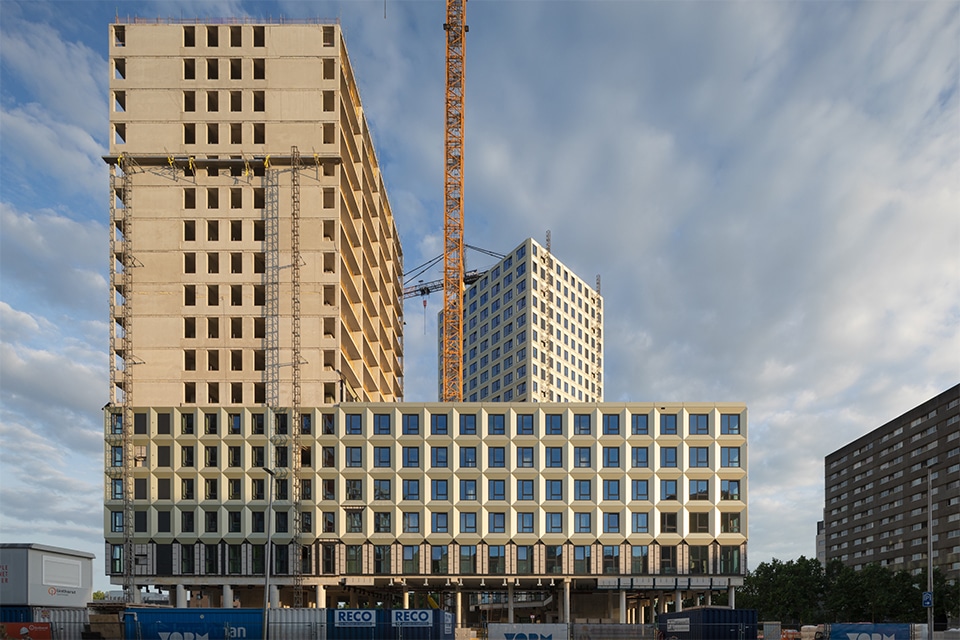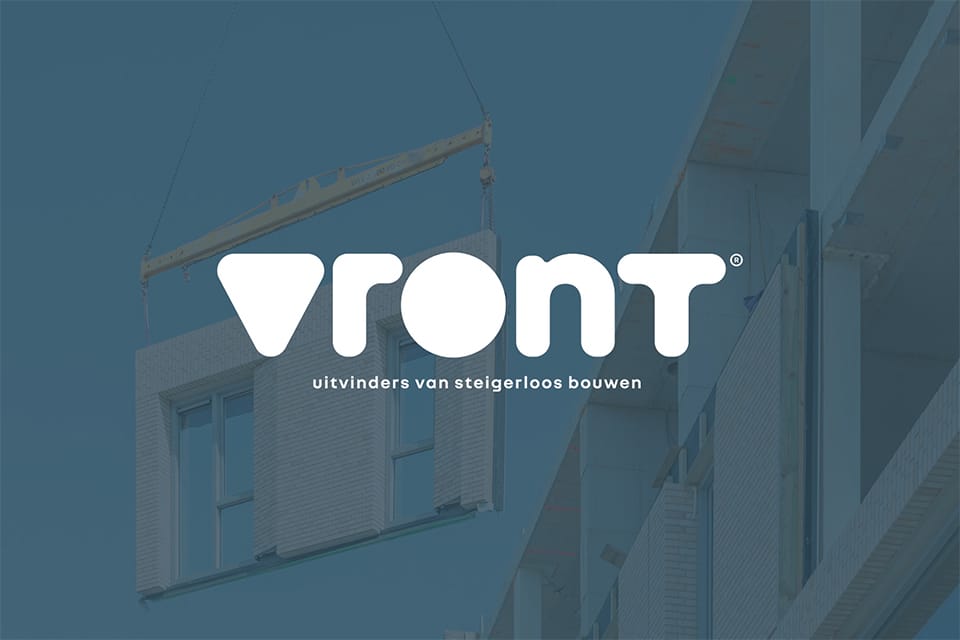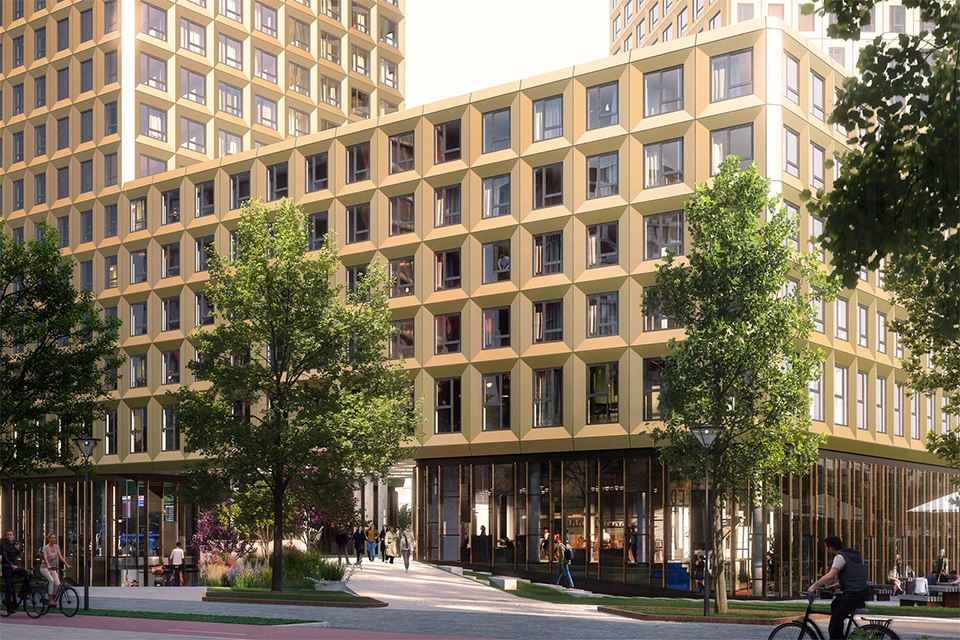
Redevelopment Leidsekade 100, 101 and 102: Architectural and logistical challenges in Amsterdam city center
This brings a lot of challenges, since the foundation had to be renewed, there is only minimal space for the supply and removal of materials, and it is partly a municipal monument. When the renovation is finished, sixteen beautiful and spacious apartments will appear, which will also be gas-free.
Salverda's focus is on inner-city projects that are difficult to access and have high-quality finishes. This is certainly the case with the three homes in downtown Amsterdam. The properties date from 1885. Amsterdam buildings are known to often suffer from wood rot in the foundation, and this was another case in point. "The top part of the foundation pile had rotted away, causing the foundation to sink. Here the buildings had subsided toward each other, with the middle building being as much as thirty centimeters lower than the other two," says Gerwin Port, senior project manager at Salverda Bouw.

Active energy poles as foundations
To remedy this, the old wooden piles were removed and replaced with a concrete disc under the building. Gerhard Lokhorst, chief contractor at Salverda Bouw, explains: "First of all, we did a baseline measurement for the foundation repair, because we wanted to map everything out properly. Then we stripped the entire building. We added braces to the structural walls. That way we maintained stability while we remediated the soil layer. A floor of sand was then brought back and we poured a concrete work floor ten centimeters thick. Into this we inserted 54 tubular steel piles that now support the building. The concrete floor now supports the building like a table with table legs underneath." The active energy piles will be used to extract energy from the soil. This will be used to heat the premises, says Sven Steps, consultant and construction manager for Kernwaarde Groen. "In each energy pole we have made a loop to eighteen to twenty meters deep. With this we extract energy from the soil. We connect this system to the underfloor heating. Two of the three properties will be gasless with the use of heat pumps. Number 102 is a municipal monument and we could not make it gas-free. Here we did go very far with the insulation and airtightness, making it a sustainable monument with energy label A."

Planning logistics well
Architecturally, it's a fun and challenging project, but logistically all the more so, Lokhorst believes. There is a sidewalk at the front and a small courtyard garden at the back. So getting building materials in and out requires a lot of preparation. "In the courtyard we can come with a truck-mounted crane, but there are also companies there with whom we have agreed block times. Because of corona, however, it is quieter there now than usual. Moreover, since January you need an exemption if you want to enter the inner city with a truck, because of the subsidence of the quay walls. So we have to plan the logistics well."

Maintaining special character
Meanwhile, Leidsekade 102 has been completed and hard work is underway on the other two properties. Their completion is scheduled for the end of the year. Salverda and Kernwaarde Groen are keeping a close eye on ensuring that the special character of the properties is not compromised. Steps: "We put the right companies and people to work and communicate clearly that we are working on a monument. You can't just put a saw into that. You encounter a lot of construction surprises there, because no space is the same. Fortunately, with this construction team we can move quickly and the cooperation is very pleasant."



